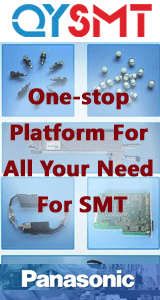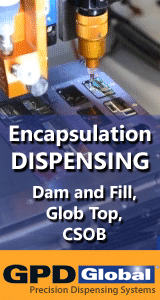Printed Circuit Board Assembly & PCB Design Forum
SMT electronics assembly manufacturing forum.
- SMTnet
- »
- Electronics Forum
- »
- Pasting ahead
Pasting ahead
Views: 5875
![]() Hi all,
What are the pro's and cons of pasting ahead...
- Nov 04, 2006
by
Bill
Hi all,
What are the pro's and cons of pasting ahead...
- Nov 04, 2006
by
Bill
![]()
![]()
![]() Bill,
I thought I had it bad here!!!!
I am sure if you...
- Nov 06, 2006
by
Bill,
I thought I had it bad here!!!!
I am sure if you...
- Nov 06, 2006
by
![]()
![]() I don't know of any articles but you will see the following ...
- Nov 06, 2006
by
I don't know of any articles but you will see the following ...
- Nov 06, 2006
by
![]()
![]() Will they give you the opportunity to develop a DOE to look ...
- Nov 06, 2006
by
Steve Thomas
Will they give you the opportunity to develop a DOE to look ...
- Nov 06, 2006
by
Steve Thomas
![]()
![]()
![]() Checks calendar ...nope not April 1st.
-The fresher the p...
- Nov 06, 2006
by
nodlac
Checks calendar ...nope not April 1st.
-The fresher the p...
- Nov 06, 2006
by
nodlac
![]()
![]()
![]() Look on the bright side you will only have to store pasted b...
- Nov 06, 2006
by
Stephen
Look on the bright side you will only have to store pasted b...
- Nov 06, 2006
by
Stephen
![]()
![]()
![]() Ever notice what happens to a cold drink when you take it ou...
- Nov 11, 2006
by
Ever notice what happens to a cold drink when you take it ou...
- Nov 11, 2006
by
![]()
![]() One printer 2 smt lines = No problem, but then you will need...
- Nov 12, 2006
by
One printer 2 smt lines = No problem, but then you will need...
- Nov 12, 2006
by
![]()
![]() I suggest to review your board , do both boards have fine...
- Nov 13, 2006
by
I suggest to review your board , do both boards have fine...
- Nov 13, 2006
by
![]()
![]()
![]() Bill,
We only allow 3 boards to be printed in front of th...
- Nov 13, 2006
by
patf
Bill,
We only allow 3 boards to be printed in front of th...
- Nov 13, 2006
by
patf
![]()
![]()
![]() SIPAD - Check them out. Used them at a previous company.
...
- Nov 13, 2006
by
SIPAD - Check them out. Used them at a previous company.
...
- Nov 13, 2006
by
![]()
- SMTnet
- »
- Electronics Forum
- »
- Pasting ahead








